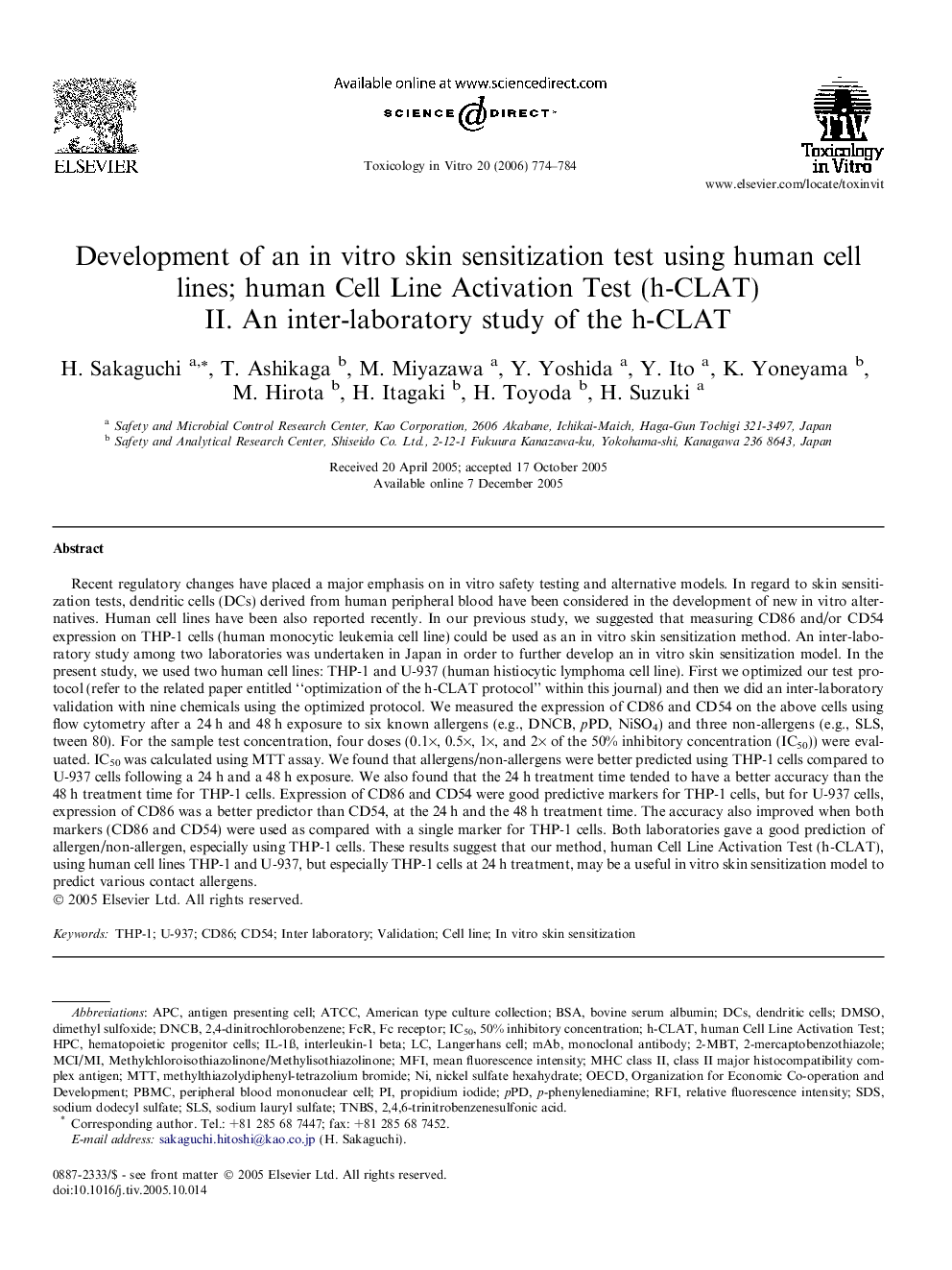| Article ID | Journal | Published Year | Pages | File Type |
|---|---|---|---|---|
| 2604016 | Toxicology in Vitro | 2006 | 11 Pages |
Recent regulatory changes have placed a major emphasis on in vitro safety testing and alternative models. In regard to skin sensitization tests, dendritic cells (DCs) derived from human peripheral blood have been considered in the development of new in vitro alternatives. Human cell lines have been also reported recently. In our previous study, we suggested that measuring CD86 and/or CD54 expression on THP-1 cells (human monocytic leukemia cell line) could be used as an in vitro skin sensitization method. An inter-laboratory study among two laboratories was undertaken in Japan in order to further develop an in vitro skin sensitization model. In the present study, we used two human cell lines: THP-1 and U-937 (human histiocytic lymphoma cell line). First we optimized our test protocol (refer to the related paper entitled “optimization of the h-CLAT protocol” within this journal) and then we did an inter-laboratory validation with nine chemicals using the optimized protocol. We measured the expression of CD86 and CD54 on the above cells using flow cytometry after a 24 h and 48 h exposure to six known allergens (e.g., DNCB, pPD, NiSO4) and three non-allergens (e.g., SLS, tween 80). For the sample test concentration, four doses (0.1×, 0.5×, 1×, and 2× of the 50% inhibitory concentration (IC50)) were evaluated. IC50 was calculated using MTT assay. We found that allergens/non-allergens were better predicted using THP-1 cells compared to U-937 cells following a 24 h and a 48 h exposure. We also found that the 24 h treatment time tended to have a better accuracy than the 48 h treatment time for THP-1 cells. Expression of CD86 and CD54 were good predictive markers for THP-1 cells, but for U-937 cells, expression of CD86 was a better predictor than CD54, at the 24 h and the 48 h treatment time. The accuracy also improved when both markers (CD86 and CD54) were used as compared with a single marker for THP-1 cells. Both laboratories gave a good prediction of allergen/non-allergen, especially using THP-1 cells. These results suggest that our method, human Cell Line Activation Test (h-CLAT), using human cell lines THP-1 and U-937, but especially THP-1 cells at 24 h treatment, may be a useful in vitro skin sensitization model to predict various contact allergens.
